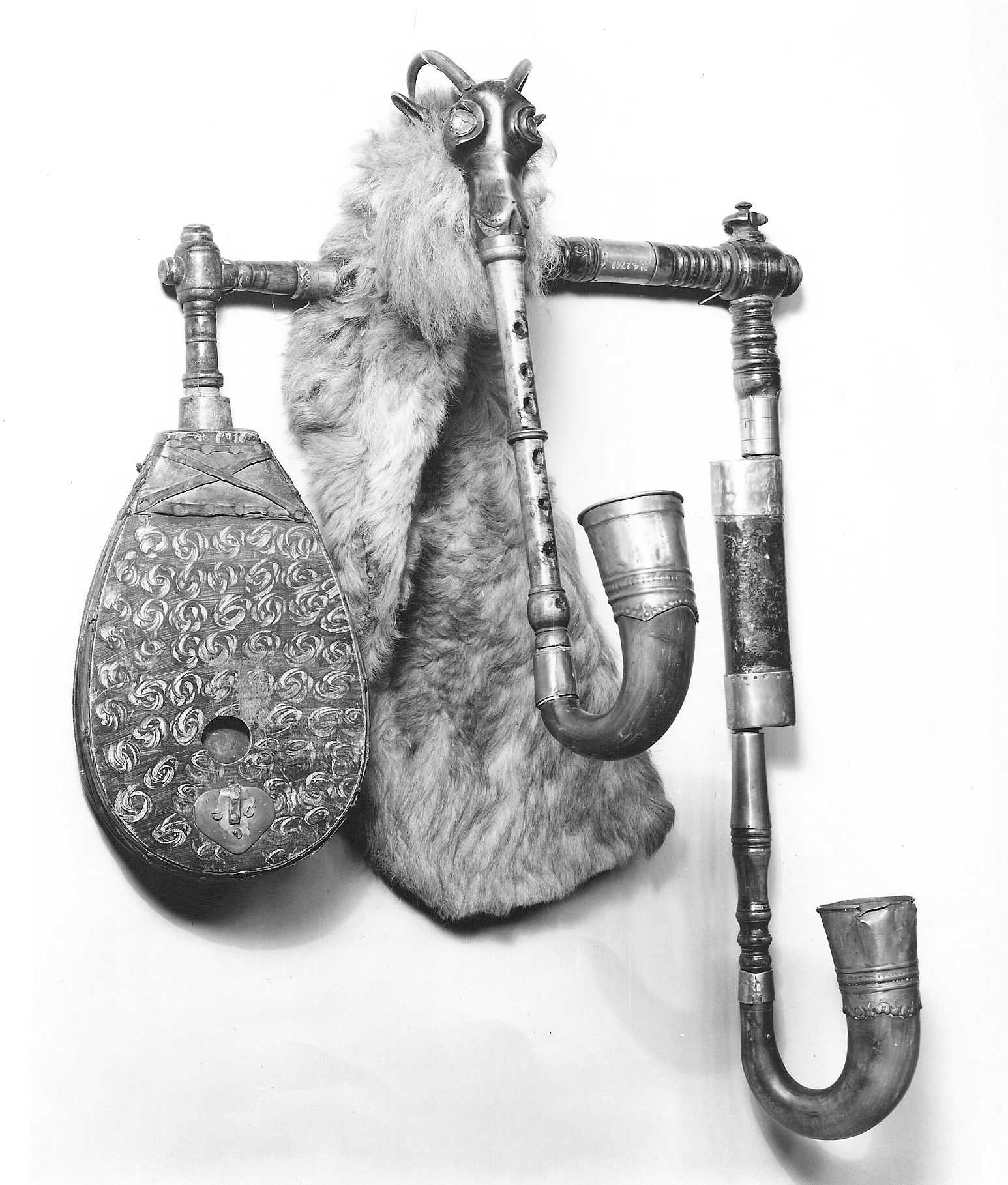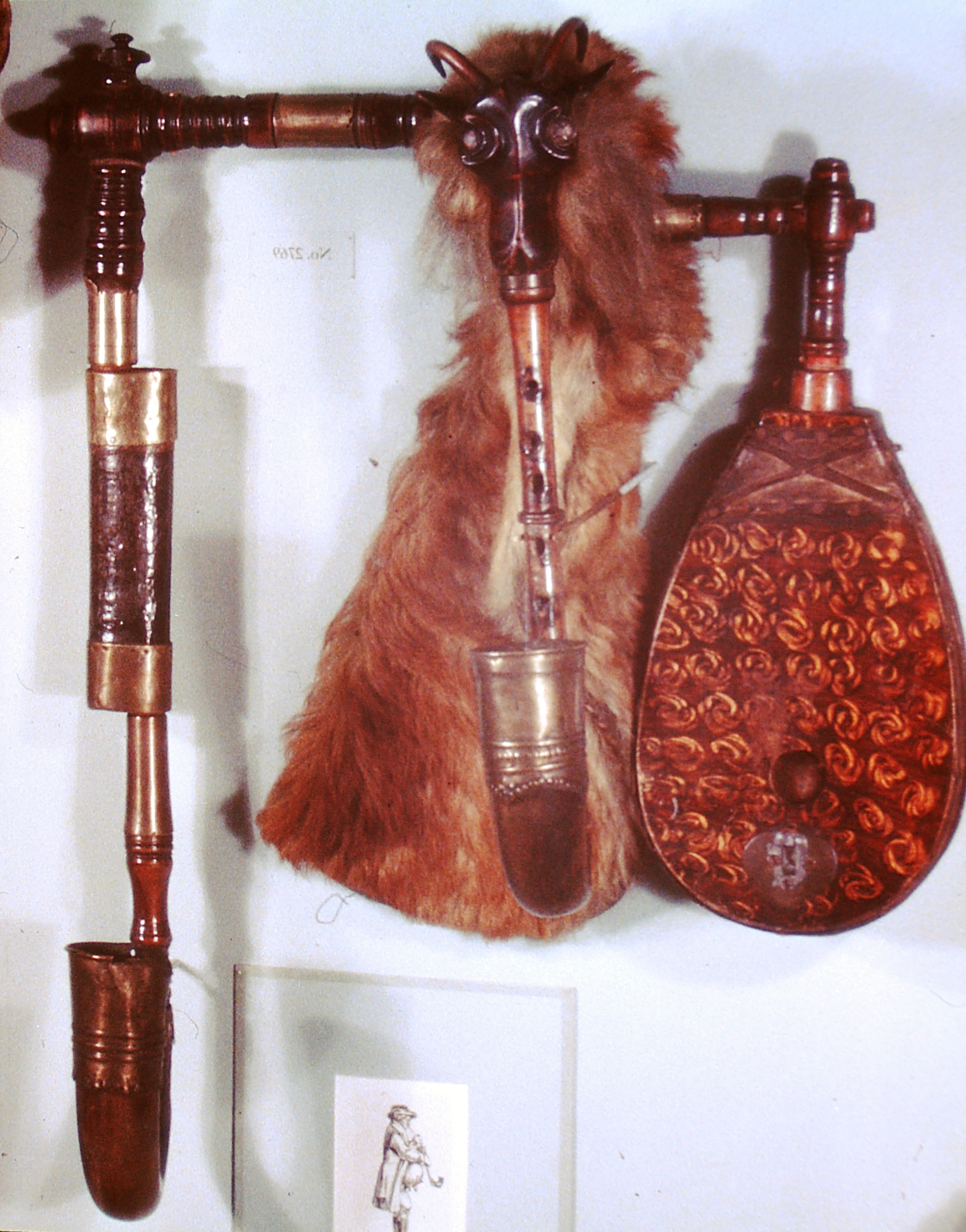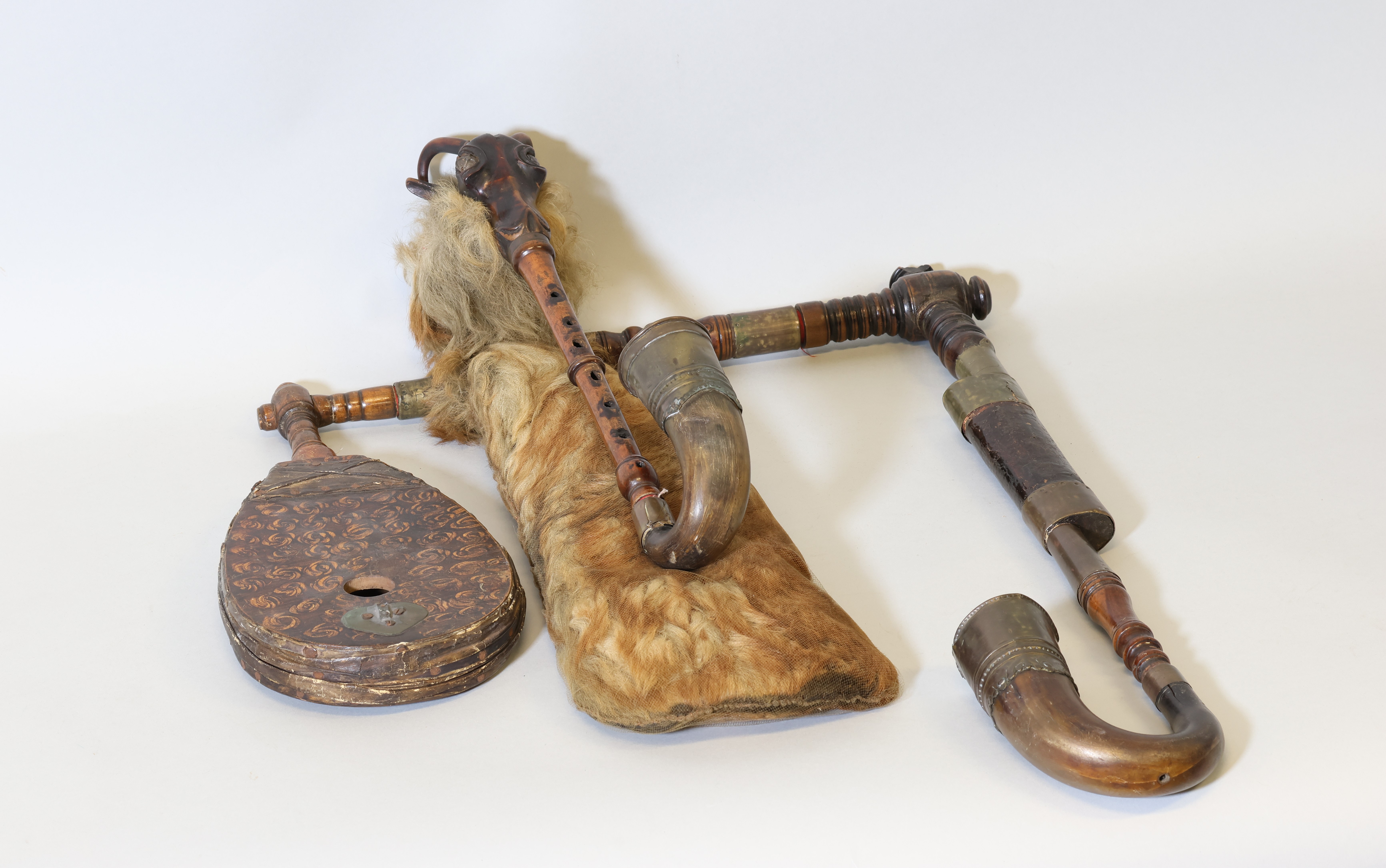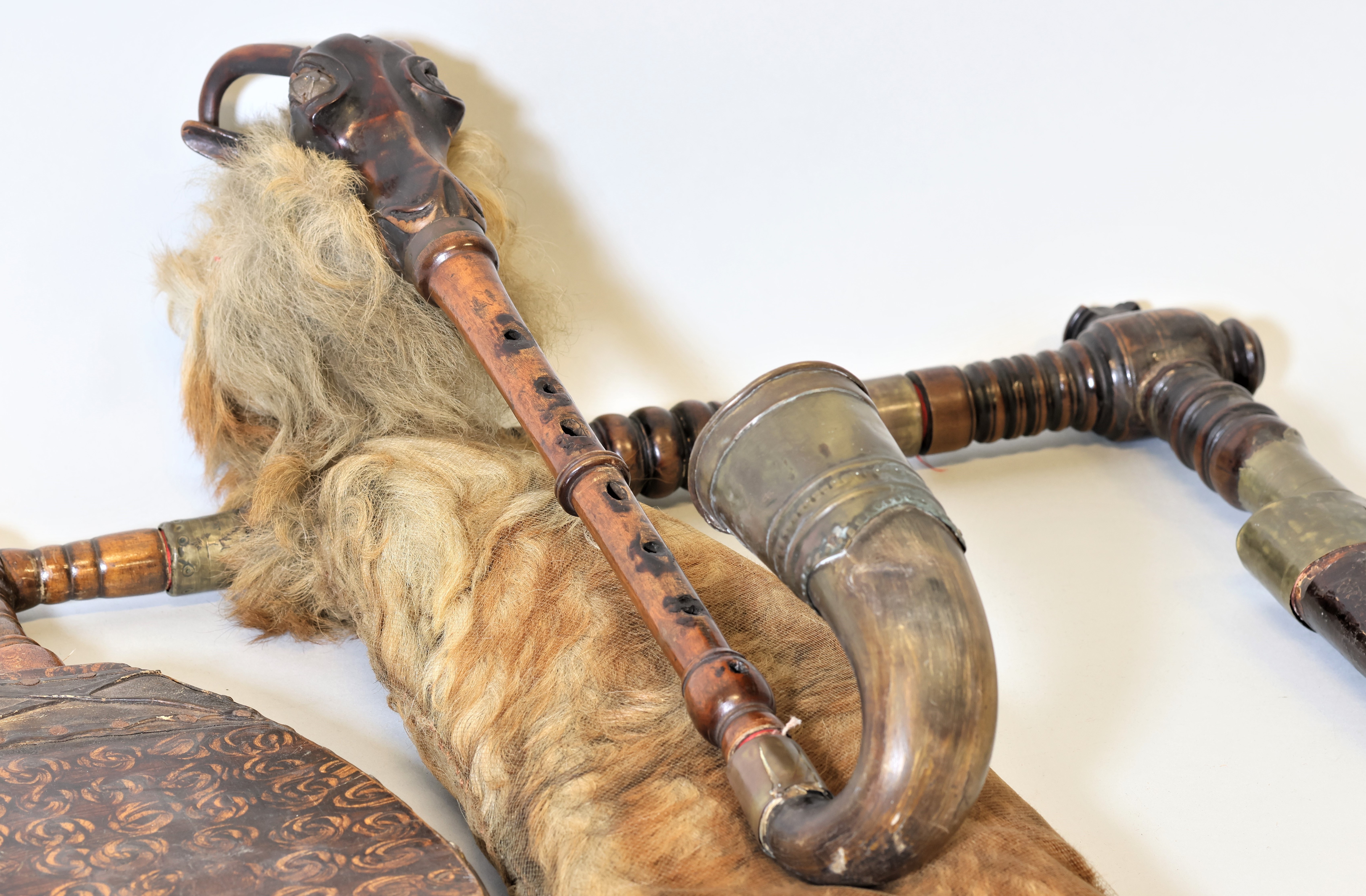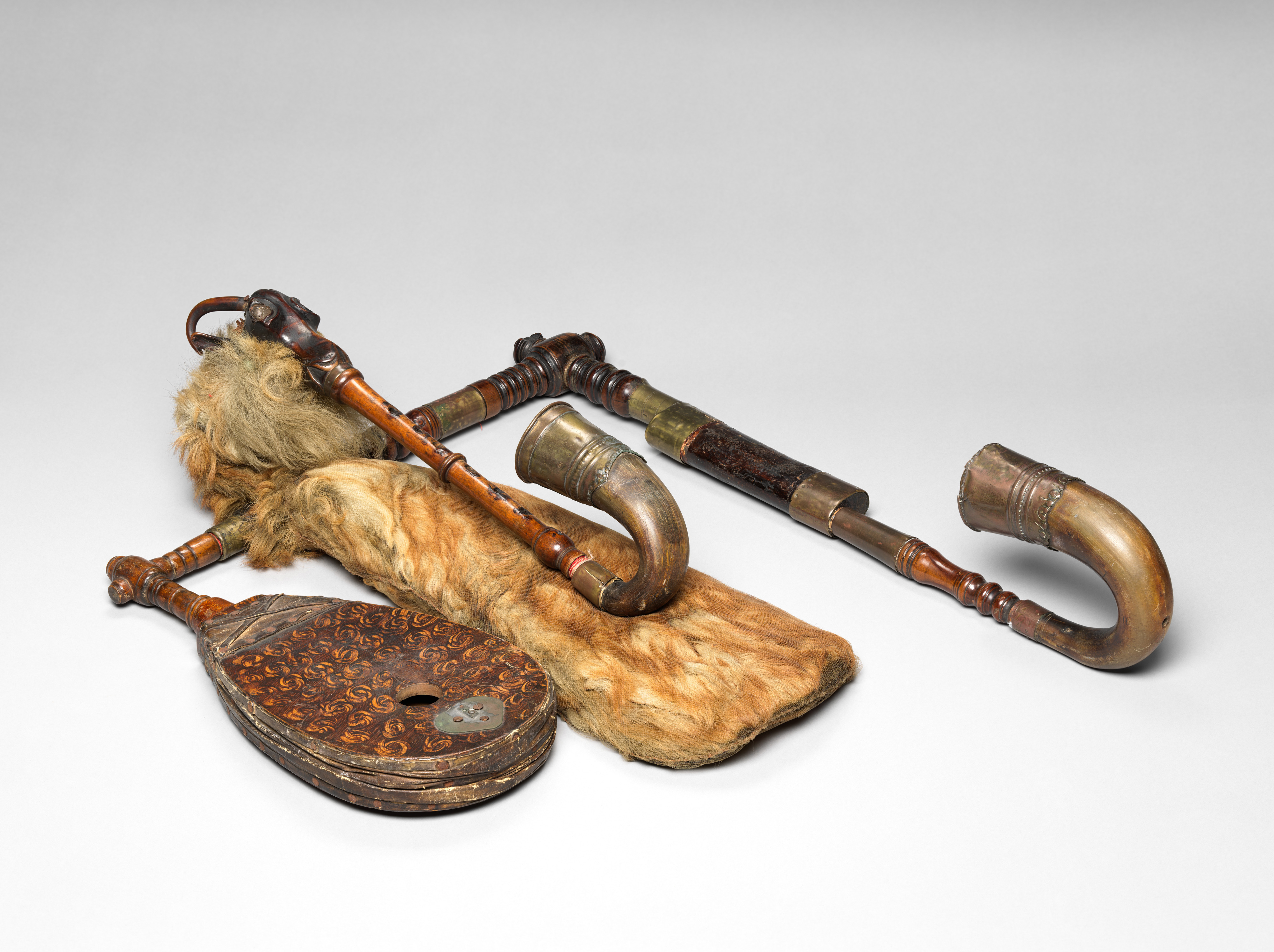Bock
F. Ch. Wohlborld German
19th century
Not on view
The bock is a bellows-blown bagpipe from Bohemia. Scholar Michael Cwach identifies three different types of Bohemian bagpipes: Type A are mouth-blown with the drone pipe hanging in front of the player (dudy, dudelsack, Bohemian bagpipes), type B are larger bellows-blown bagpipes, also with a drone hanging in front of the player (německé dudy, dudy, Bohemian or Egerland bagpipes), and type C and bellows-blown bagpipes with a drone hanging over the shoulder and often featuring a goat head (Classical polnischer Bock, pukl, bock) (Cwach 2012:111). This is a ‘type C’ bagpipe.
This bellows-blown bock features a goatskin bag, with the hair on the outside, a carved goat head acting as the stock to a single melodic pipe ending in a horn with a brass extension, and a drone. The bellows, attached to the bag with a cross-shaped joint, is rounded and decorated with painted swirls.The goat head differs from those found on Czech Bohemian bagpipes, the latter being much more symbolic and stylized in their depiction of the animal. This chanter stock is a very lifelike albeit stylized goat head, complete with glass eyes, wooden horns and wooden ears. Michael Vereno noted that this aesthetic is typical of German bocks (Vereno, 2023). The ears are filled with wax, a common location for musicians to store the wax used to tune the instrument (Cwach 2012:40).
The drone brings together two pipes at an angle of 90 degrees (a ‘large cross’), which allows the whole instrument to balance on the shoulder of the musician, giving a significant amount of freedom of movement (Cwach 2012:67-8). The second part of the drone, hanging towards the ground, has a ‘bordunverkürzer’, a drone shortener. This is a rectangular block of wood that has three bores, effectively folding the drone; this device was added to the instrument in the mid eighteenth century and allows for a deep drone, while keeping the cylindrical pipe high off the ground (Cwach 2012:69-70). The end of the drone is complete with a brass-ended cow horn bell.
This bagpipe is referenced in a letter sent to Brown on 20th September 1902. The instrument is said to have been made by F. Ch. Wohlborld from Nürnberg, and cost 100 Mark. It probably came with a goatskin bag (#89.4.2770), which would have added to the cost of the instrument, which the dealers considered expensive (Dresdner Bank 1902)
(Cassandre Balosso-Bardin, 2023)
Technical Description
Single reddish wood chanter with cylindrical bore, 300 mm (530 mm including upturned horn bell), 7/1 fingerholes in 2 groups separated by turned ring, 1 vent hole on underside of bell;
Set in carved stock representing a goat head with glass eyes: single reed (66 mm) with cane tongue lapped onto lead-filled brass staple; Single drone in 3 sections, 752 mm including horn bell, with single reed (78 mm) similar to chanter's reed;
Single-fold flat pear-shaped leather bellows, with iron hook (broken) that fastened to player's sleeve and leather loop for strap (missing);
Below the goat head are 2 turned stocks with right-angled intermediate joints for bellows and drone;
goatskin bag with hair exposed, sewn with partial welt;
Brass mounts and decorative turnings, bell rims of brass pierced for safety chains.
References
Cwach, Michael, 2012. The pukl and Chodsko: Aspects of linkage between a bagpipe and an ethnographic region. Doctoral Thesis, University of Canterbury.
Dresdner Bank in Nürnberg, 1902. Letter to Mary Elizabeth Brown, 20 September 1902. Musical Instrument Department Archives, Metropolitan Museum of Art, New York.
Vereno, Michael, 2023. Communication with Cassandre Balosso-Bardin, July 2023.
This image cannot be enlarged, viewed at full screen, or downloaded.
This artwork is meant to be viewed from right to left. Scroll left to view more.


